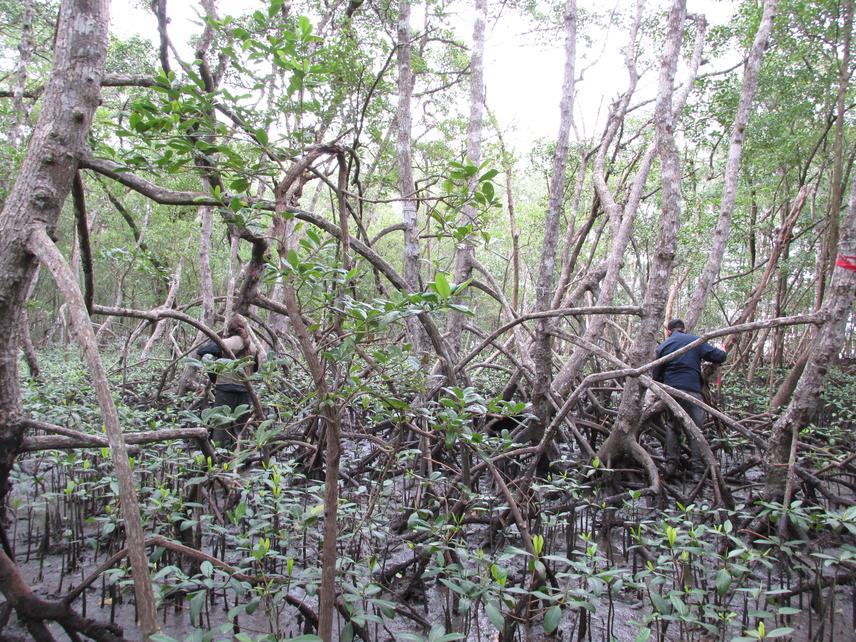Article featuring the project Ecosystems (2019) 22:1126-1144
Carla Roberta Gonçalves Reis
This study aims to evaluate effects of anthropogenic fertilization on nitrogen dynamics in mangroves, and the use of leaf δ15N as a monitoring tool.

Measuring vegetation structure in a fringe mangrove site.
The increasing reactive nitrogen creation is considered to be one of the major threats to conservation of natural ecosystems and maintenance of human activities, resulting in structural and functional alteration of natural ecosystems and loss of biodiversity. Mangroves potentially play an important role in the global context of anthropogenic nitrogen enrichment. Mangrove forests are the only forest formations occurring in the confluence of terrestrial, marine, and freshwater systems. Therefore, alterations in mangroves functioning as a consequence of nitrogen enrichment may affect not only important ecosystem goods and services they provide to society, such as support of coastal fisheries and an efficient carbon sequestration, but also affect surrounding ecosystems.
The present study aims to evaluate effects of anthropogenic fertilization on nitrogen dynamics in mangroves, and the use of the natural abundance of nitrogen stable isotopes (δ15N) of leaf samples as a monitoring tool. To achieve these goals, differences in nitrogen dynamics between conserved and anthropogenically fertilized fringe and basin mangrove forests will be investigated in the Estuarine-Lagunar Complex of Cananeia-Iguape, which is considered a World Heritage by UNESCO. The study will be conducted at 6 mangrove sites: a fringe and a basin forest site in a conserved mangrove area of the Cardoso Island State Park, a fringe and a basin forest site in a highly anthropogenically fertilized mangrove area in Comprida Island, and a fringe and a basin forest site in a mangrove area under intermediate levels of anthropogenic fertilization in Cananeia Island. These study sites are included in the federal Environmental Protection Area of Cananeia-Iguape-Peruibe and in the Lagamar of Cananeia State Park.
Nitrogen dynamics in these mangrove sites will be assessed through the evaluation of vegetation structure, nutrient concentration in vegetation, sediment and estuarine water, biological nitrogen fixation rates in sediment and leaf litter, net rates of nitrogen mineralization and nitrification rates in sediment, and the δ15N in the sediment-plant-leaf litter system.